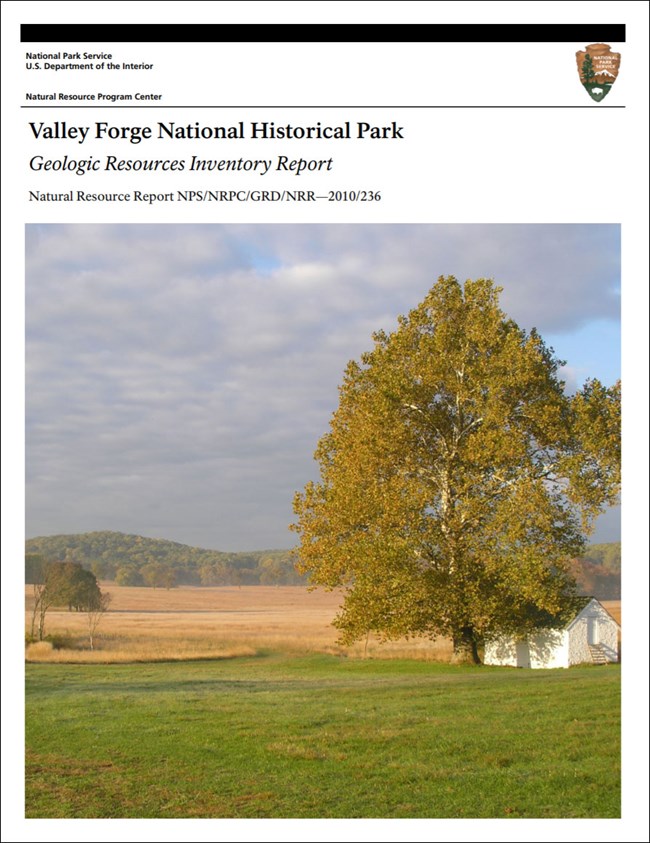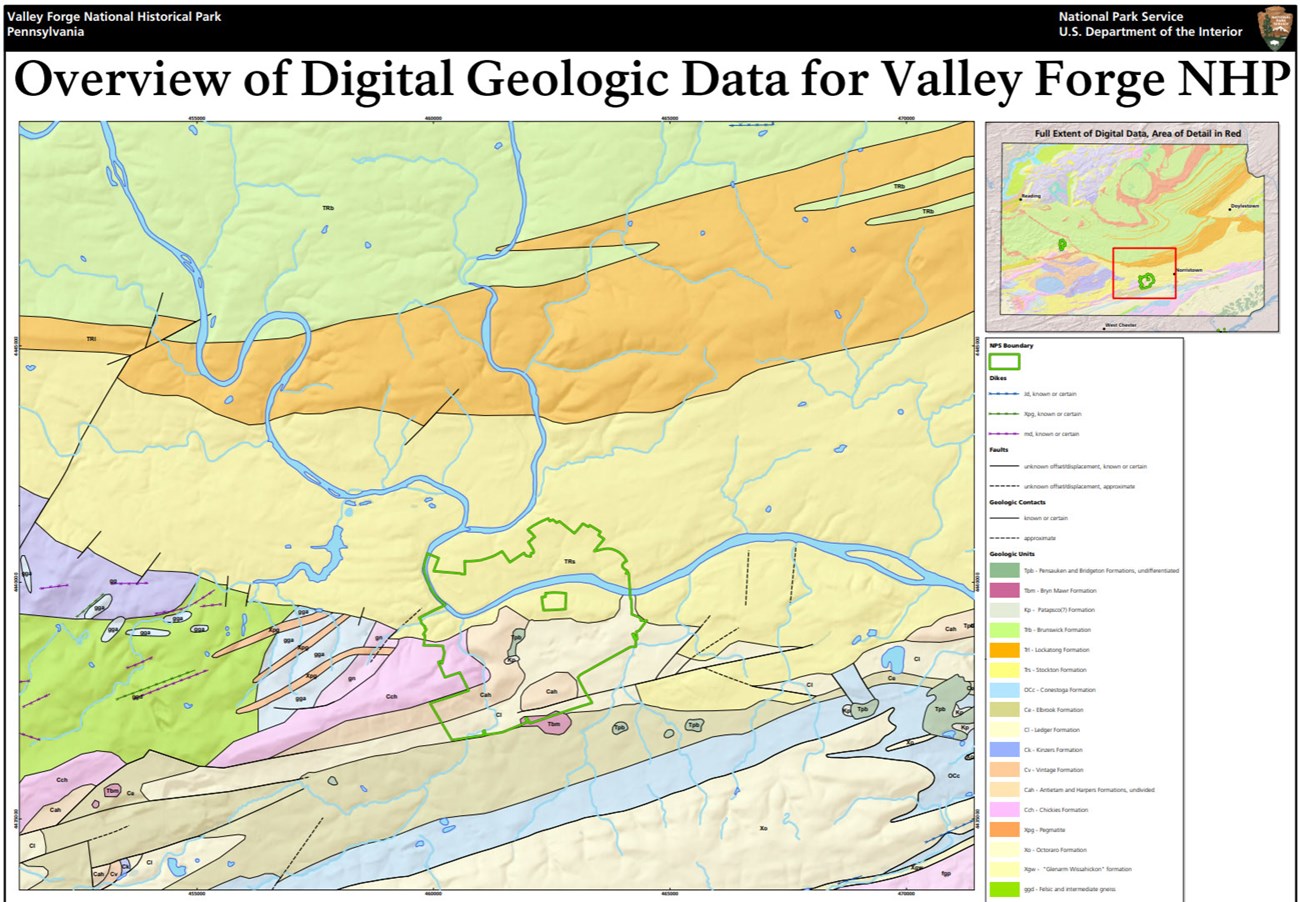Last updated: July 17, 2024
Article
NPS Geodiversity Atlas—Valley Forge National Historical Park, Pennsylvania
Geodiversity refers to the full variety of natural geologic (rocks, minerals, sediments, fossils, landforms, and physical processes) and soil resources and processes that occur in the park. A product of the Geologic Resources Inventory, the NPS Geodiversity Atlas delivers information in support of education, Geoconservation, and integrated management of living (biotic) and non-living (abiotic) components of the ecosystem.

Introduction
Valley Forge National Historical Park (VAFO) is located approximately 29 km (18 mi) northwest of downtown Philadelphia along the boundary of Chester and Montgomery Counties, Pennsylvania. Authorized as a national park unit on July 4, 1976, VAFO encompasses about 1,403 hectares (3,468 acres) and the site of the storied winter encampment of General George Washington and the Continental Army during 1777–1778 (National Park Service 2016). VAFO conserves and interprets the land and resources associated with the encampment site, commemorating the sacrifices and achievements made during the six-month stay as the army was transformed into a cohesive and disciplined fighting force. The historical park preserves historic landscapes, earthworks, archeological sites, and historic structures including Washington’s Headquarters.
Geologic Setting
Located in the eastern Piedmont physiographic province, the rocks of the Valley Forge National Historical Park area range from metamorphosed and deformed Precambrian gneisses and Paleozoic metamorphosed sedimentary rocks, to the gently tilted, younger sedimentary strata of the Mesozoic rift basins (Thornberry-Ehrlich 2010d). In the northern area of VAFO, generally flat-lying Triassic-age sediments of the Stockton Formation overlap older Cambrian rocks of the Chickies, Antietam, Harpers, and Ledger Formations. The older Paleozoic geologic units in the Valley Forge area are faulted, deformed, and record varying degrees of metamorphism in surface exposures (Thornberry-Ehrlich 2010d). Scattered Cretaceous and Cenozoic units crop out in the central and southern portions of the park and include the Patapsco Formation, Bryn Mawr Formation, Pensauken Formation, and Bridgeton Formation.
Regional Geology
Valley Forge National Historical Park is a part of the Piedmont Physiographic Province and shares its geologic history and some characteristic geologic formations with a region that extends well beyond park boundaries.
- Scoping summaries are records of scoping meetings where NPS staff and local geologists determined the park’s geologic mapping plan and what content should be included in the report.
- Digital geologic maps include files for viewing in GIS software, a guide to using the data, and a document with ancillary map information. Newer products also include data viewable in Google Earth and online map services.
- Reports use the maps to discuss the park’s setting and significance, notable geologic features and processes, geologic resource management issues, and geologic history.
- Posters are a static view of the GIS data in PDF format. Newer posters include aerial imagery or shaded relief and other park information. They are also included with the reports.
- Projects list basic information about the program and all products available for a park.
Source: NPS DataStore Saved Search 3188. To search for additional information, visit the NPS DataStore.
A NPS Soil Resources Inventory project has been completed for Valley Forge National Historical Park and can be found on the NPS Data Store.
Source: NPS DataStore Saved Search 3213. To search for additional information, visit the NPS DataStore.

Related Links
Related Articles
Valley Forge National Historical Park
National Park Service Geodiversity Atlas
The servicewide Geodiversity Atlas provides information on geoheritage and geodiversity resources and values within the National Park System. This information supports science-based geoconservation and interpretation in the NPS, as well as STEM education in schools, museums, and field camps. The NPS Geologic Resources Division and many parks work with National and International geoconservation communities to ensure that NPS abiotic resources are managed using the highest standards and best practices available.

